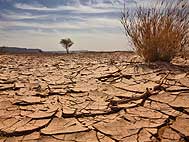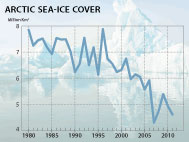| SEARCH |
-

Nov 17, 2015
Reflections on a three-decade legacy
The International Geosphere-Biosphere Programme (IGBP) will come to a close at t...
-
Nov 17, 2015
Use of and access to content on this website
Text and images produced by IGBP in house are free to use with appropriate credi...
-
Nov 12, 2015
Bella Gaia performance and panel discussion to mark IGBP's closure
A musical performance by Bella Gaia will celebrate the achievements and legacy o...
-

Towards Future Earth:
evolution or revolution?
During its three decades of existence, the International Geosphere-Biosphere Pro...
-
A personal note on IGBP and the social sciences
Humans are an integral component of the Earth system as conceptualised by IGBP. João Morais recalls key milestones in IGBP’s engagement with the social sciences and offers some words of advice for Future Earth.
-
IGBP and Earth observation:
a co-evolution
The iconic images of Earth beamed back by the earliest spacecraft helped to galvanise interest in our planet’s environment. The subsequent evolution and development of satellites for Earth observation has been intricately linked with that of IGBP and other global-change research programmes, write Jack Kaye and Cat Downy .
-
Deltas at risk
Around 500 million people worldwide live on deltas, but many of the world's deltas are sinking due ...
-
Climate change: the state of the science
A new data visualization released on the first day of the plenary negotiations at the UNFCCC’s clima...
-
Climate Change:
the State of the Science
Videos now online from the Stockholm public forum to mark the launch of the IPCC's climate report, 2...
Pathways between primary production and fisheries yields of large marine ecosystems
Plos ONE (2012)
Friedland K D, Stock C, Drinkwater K F, Link J, Leaf R, Shank B, Rose J, Pilskaln C H and Fogarty M
DOI: 1371/journal.pone.0028945
Vol 7, e28945

Abstract
The shift in marine resource management from a compartmentalized approach of dealing with resources on a species basis to an approach based on management of spatially defined ecosystems requires an accurate accounting of energy flow. The flow of energy from primary production through the food web will ultimately limit upper trophic-level fishery yields. In this work, we examine the relationship between yield and several metrics including net primary production, chlorophyll concentration, particle-export ratio, and the ratio of secondary to primary production. We also evaluate the relationship between yield and two additional rate measures that describe the export of energy from the pelagic food web, particle export flux and mesozooplankton productivity. We found primary production is a poor predictor of global fishery yields for a sample of 52 large marine ecosystems. However, chlorophyll concentration, particle-export ratio, and the ratio of secondary to primary production were positively associated with yields. The latter two measures provide greater mechanistic insight into factors controlling fishery production than chlorophyll concentration alone. Particle export flux and mesozooplankton productivity were also significantly related to yield on a global basis. Collectively, our analyses suggest that factors related to the export of energy from pelagic food webs are critical to defining patterns of fishery yields. Such trophic patterns are associated with temperature and latitude and hence greater yields are associated with colder, high latitude ecosystems.
IGBP closed at the end of 2015. This website is no longer updated.
-

Global Change Magazine No. 84
This final issue of the magazine takes stock of IGBP’s scientific and institutional accomplishments as well as its contributions to policy and capacity building. It features interviews of several past...
-

Global Change Magazine No. 83
This issue features a special section on carbon. You can read about peak greenhouse-gas emissions in China, the mitigation of black carbon emissions and the effect of the 2010-2011 La Niña event on gl...
-
INTERGOVERNMENTAL PANEL ON CLIMATE CHANGE:
How green is my future?
UN panel foresees big growth in renewable energy, but policies will dictate just how big.
-
UK:
'The Anthropocene: a new epoch of geological time?'
Royal Society, Philosphical Transactions A




















